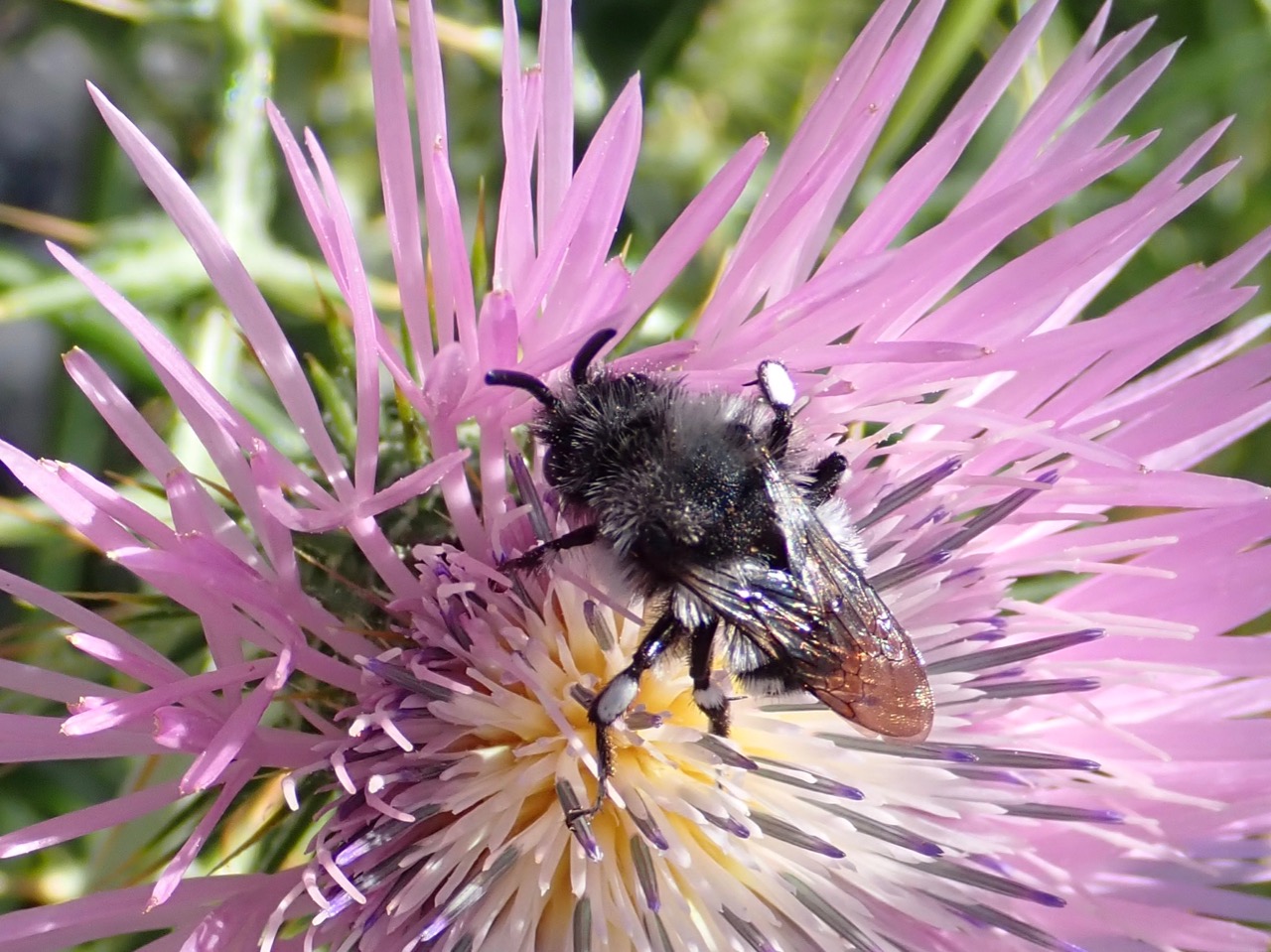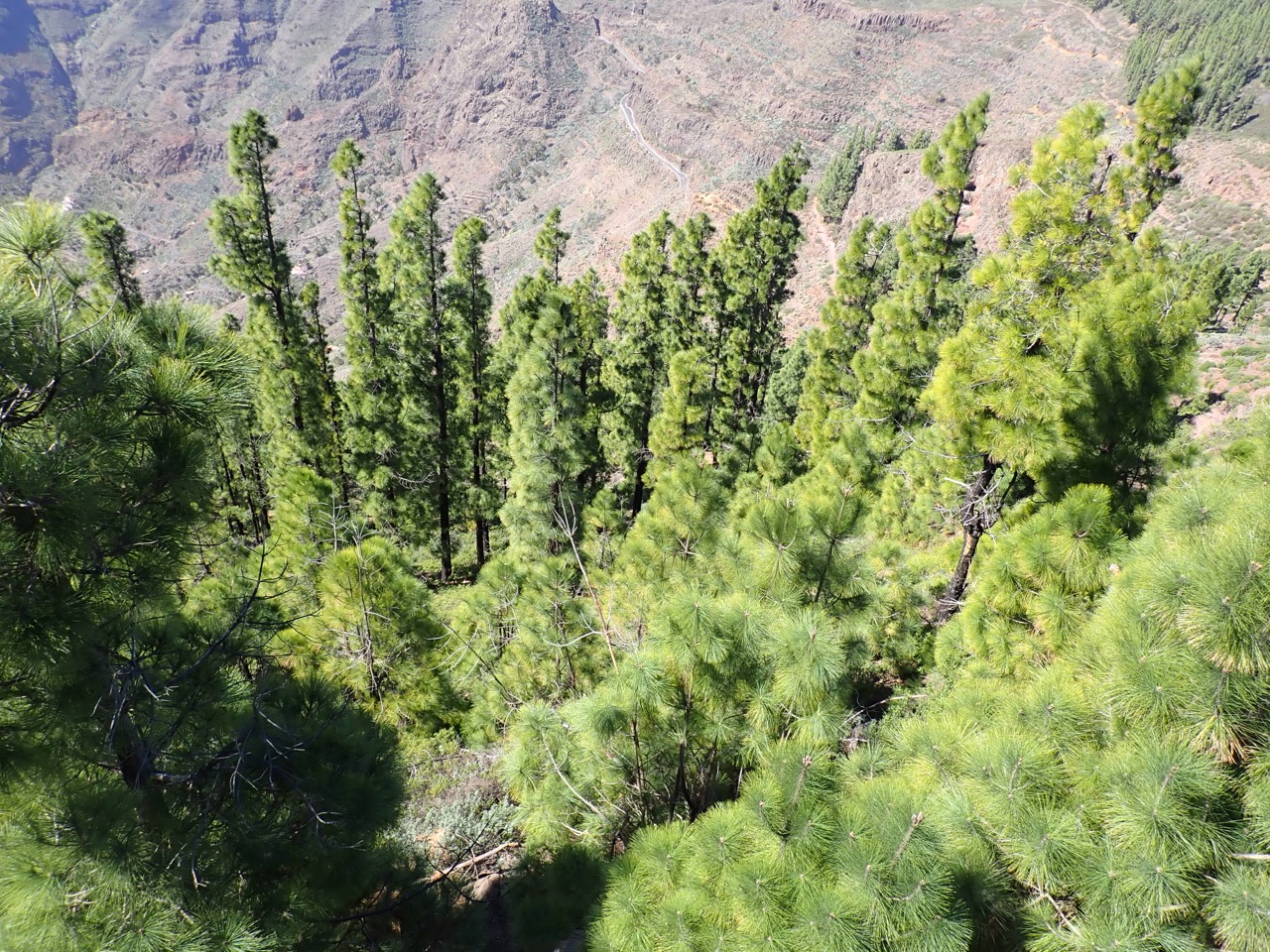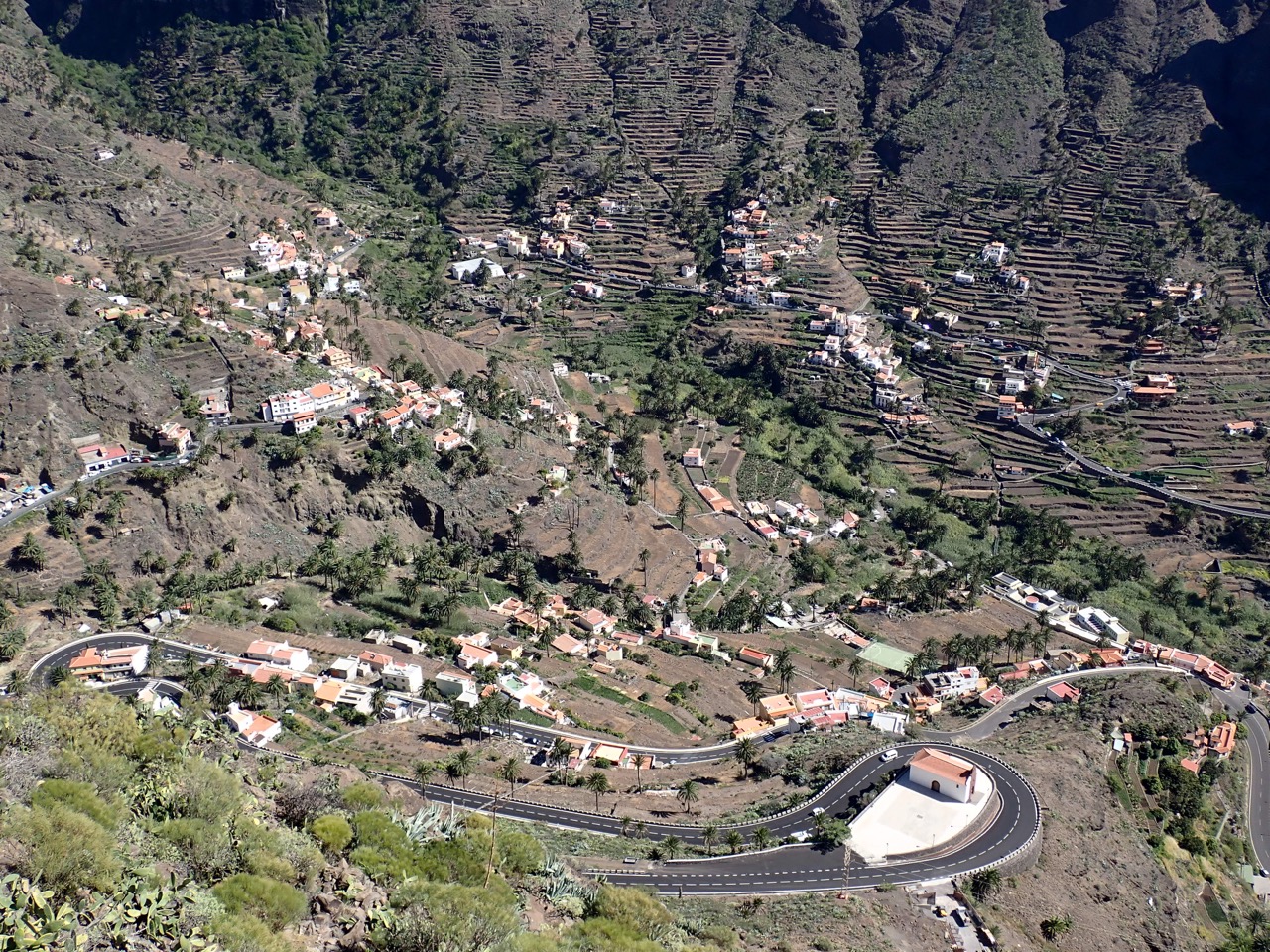This is the town Agulo, just two days before we were looking at it from the glass lookout above on the cliffs, where the ground is orange.
After we got to the North of the Gomera waves became more ordered and we got some wind and the sailing was quite nice. We were still almost beating (orca), which is not the most comfortable direction to sail, but it was much better than we expected. We didn't sail to La Palma in rhumb line (direct line), we tried to gain some height and went a bit more North, which was perfect, since the wind turned near La Palma and we needed to turn more to the West. And so we also kept a bit away from ferry route, which made sailing a lot easier. You can see another sailboat, that was in the ferries path, squeezed in between ferries on the right lower edge of screen. One ferry was doing 35 and the other 24 knots.
Although it wasn't late when we got to the marina, we decided to stay on the boat and go to bed early. But we didn't know that there's loud music in restaurant in the marina till 2 in the morning, so it kept us awake for a while.
And in the middle of the nigh "la calima" came. La calima is strong wind from Africa, that carries a lot of Sahara sand with it, but also warm air and big waves. The marina in La Palma is unfortunately built in a wrong place and swell manages to get in even when the waves are not very big. They even built an anti-swell door (kind of lock over the entrance) to diminish the swell and really makes situation better, but not good. At almost no time the boats are very still in marina, there's always some movement. When we arrived on Saturday evening the situation was not too bad. We still used plenty of lines to all directions to secure the boat, luckily we had the entire double berth with a finger to each side all to ourself. But waves got much bigger in the night, from some 1,5 m to 2 m when we arrived, to 5m towards the morning. It was horrible, sleeping was almost impossible, because the boat was moving and jumping and jerking on lines violently. We weren't at all worried by 35 knots of wind, it was the movement that was our most concern. Captain almost didn't get any sleep, he was checking on lines and worrying that any of them might snap. In the morning he was in really bad mood, so much so that he wanted us to leave the marina immediately, even when out at sea it was still mayhem - big waves, strong wind and almost no visibility. Luckily our neighbours convinced him that it will get better soon, already the next night. I somehow managed to sleep a bit better and was not really willing to get out of the marina, that seemed less terrible than the sea out there.
After couple of cups of coffee and a breakfast we went into town of Santa Cruz. First we checked the state of the sea on the beach. It was already a little bit better than in the night.
The carnival was already happening, on Sunday it was for the kids and so in the middle of the day. On carnival people of La Palma dress in white - men in old fashioned white or whitish suits and ladies in white dresses, often with lace. It should represent the returning immigrants that were coming back from Cuba and Panama with lots of money. For some reason people also throw baby powder at each other, nobody is sure why that is. While we stayed away from the street where the baby powder throwing was the wildest, we got a bit of it as well. The statues of the musicians were also not spared, just like plants, houses, ATMs.
The part of the town that we were able to walk through was very nice...
...with beautiful balconies from colonial era...
...and replica of one of the Columbus ships.
The best part was that on our way back we found a live Cuban music and lots of people dancing. It was such a lovely atmosphere. All of the tables in front of the nearby restaurant were taken, so we sat on the low wall of the adjacent park. And waiters served us as well, usually they would just come by every half an hour with couple of beers and they never needed to return them to the bar. We had several ourselves and even Captains mood improved quite a bit.
And another "powdered" statue. And this was only the beginning.
Later we returned to the boat, we wanted to get some sleep. The visibility was terrible, and the pontoons were still moving and jumping from the swell. Well, a little bit of my instability I could probably attribute to beer as well.
This is the famous anti-swell door, I can't imagine how the previous night and the following days would have been without it. I don't think it would have been safe to stay, probably most of the vessels would need to sail out to sea.
With the movement of the boat and the pontoons one has to choose the right moment to climb aboard.
And this is what la calima brought us - lots of orange Sahara sand. So instead of taking a nap we washed the boat.
The sand was everywhere.
Later we read that it was even worse on other islands, flights were canceled due to strong wind and low visibility and people were stranded in airports. They said it was the worst la calima in 40 years.
We slept a bit better next night, although there were many boats still coming to the marina to be there for the carnival's main event on Monday. For each boat coming in the marinero had to open the anti-swell door (they lowered it), and more swell came in again and woke us up. Oh well...
On Monday, after big breakfast and again quite some coffee, we strolled into town. The party was already in full swing. The streets were full of white-clad people and clouds of baby powder. We saw this stall selling mojitos and what was interesting, they were making it with fresh pressed sugar cane juice.
While Captain was taking photos, I was standing in line to get two mojitos...
...and managed to get two hats and some baby powder with the mojitos. Mojito luckily had the lid on top and a straw, otherwise much of baby powder would land in it.
The carnival drew in hordes of people, I think I read somewhere that the town has some 14.000 residents, and 85.000 tourists come to the carnival. True, there were masses of people everywhere and big clouds of baby powder as well, so that is was hard to move and breathe.
Baby powder is often thrown in the air so it mostly lands on peoples heads.
But after another mojito - who cares... But sunglasses are essential, and hat helps as well.
While drinks are not expensive, most locals bring their own stuff - from ice to beer to cocktail mixes and even the food, like these girls.
You can only have so much mojitos and baby powder, even with Cuban music, so late in the afternoon we returned to the boat. And after the dinner finally had a bit more quiet night, although the party in town still went on.
On Wednesday we were resting, and so did the rest of the town. Masses of tourists were leaving on ferries, some sailboats left as well. Restaurants and bars were closed for cleaning and streets were hosed down by water, in attempt to flush away both baby powder and Sahara sand. We took a stroll through almost empty streets to stretch our legs. In the evening we rented a car for next three days. Our island explorations by car will get their own post. Or two. Or maybe three?
Tomorrow we are leaving La Palma, we will try to get to Lanzarote. We studied the weather hard and it looks like it would be the best weather for sailing ENE for quite some time (well, we can't wish for trade winds to turn to SW, even if that would be convenient). I just wish the passage would be se smooth and uncomplicated as sailing here from Gomera. If all goes well, we'll reach Lanzarote on late Monday evening.



















































